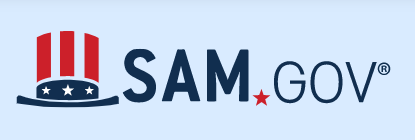Getting Started
To begin your search for federal funding, follow the steps below.
Step 1. Eligibility – Use these links to determine what kind of federal funding applies to you and/or your organization.
- Who is Eligible for a Federal Grant?
- Personal Needs
- Student Loans
- Small Businesses
- Other Business Opportunities (i.e. Government Contracting)
- Government Benefits
Step 2. Search for Programs – Once you determine your eligibility, use these links to find an available funding opportunity.
Grants.gov: System that provides a centralized location for grant seekers to find and apply for federal funding opportunities. Today, Grants.gov houses information on over 1,000 grant programs. Includes grants, loans, business, and nonfinancial help.
Assistance Listings (SAM.gov – formerly known as The Catalog of Federal Domestic Assistance): The official US government system for grant and contract opportunities, contract data, assistance listings, wage determinations, and more.
The Congressional Research Service: An extensive database with resources, guides, examples of grant applications, available grant opportunities, and more.
- In the menu bar, click “Issue Areas” and scroll through the options to find additional relevant resources that pertain to your issue.
- Additional Resources for Grant Seekers provided by the Congressional Research Service.
FedConnect: The government acquisition and grants portal. Every day, FedConnect helps over 100,000 vendors and grant applicants find, respond to, and win opportunities for contracts, grants, and other types of assistance funding.
Foundations: Identify national, state, and community foundations available for project funding.
Step 3. Learn How to Write a Grant Proposal – After you find a funding opportunity, use these sources to learn how to write an effective grant proposal.
- How to Develop and Write a Grant Proposal (The Congressional Research Service): The site provides resources and tips for writing an effective grant proposal.
- Candid.Learning (Foundation Center): Free, online class that provides an overview of how to write a standard project proposal to a foundation.
- The Grantsmanship Center: This website provides training, webinars, and publications to help organizations plan solid programs, write logical, compelling grant proposals, and create earned income opportunities.
KEY FEDERAL FUNDING SOURCES
Federal grants website that allows eligible grant seekers (see Who is Eligible for a Federal Grant? under “Getting Started”) to find and apply for current competitive grant opportunities from ALL federal agencies. Grant seekers can check on notices of funding availability (NOFAs), access RSS feeds of grant opportunities, and apply for federal grants through a unified process by downloading the application and submitting it online. The website guides grant seekers in obtaining a Dun and Bradstreet (DUNS) number, and registering with System for Award Management (SAM).

Assistance Listings at beta.SAM.gov
Official descriptions of more than 2,200 federal assistance programs, including grants, loans, and other financial and nonfinancial assistance, can be found on beta.SAM.gov. Descriptions are updated by departments and agencies, and they cover authorizing legislation, objectives, and eligibility and compliance requirements.

State Single Points of Contact (Office of Management and Budget) – Highlighted link might not work, will need to figure out how to make it work (it’s a pdf)
Under Executive Order 12372, some states require federal grants applicants to submit a
copy of their application for state government level review and comment. The state offices listed here coordinate federal financial assistance and may direct federal development. For help in identifying state-level grants, other state government agencies websites may be found at State and Local Agencies.

The Appalachian Regional Commission (ARC)
The Appalachian Regional Commission (ARC) is an economic development partnership agency of the federal government and 13 state governments focusing on 420 counties across the Appalachian Region. ARC’s mission is to innovate, partner, and invest to build community capacity and strengthen economic growth in Appalachia.

Related Federal Sources
To better develop a grant proposal, search a department or agency’s Home Page to learn more about its programs and objectives. The site USA.gov also links to Government Benefits, Grants and Loans.
- Energy Efficiency and Renewable Energy (U.S. Department of Energy)
Grants are EERE’s primary funding vehicle for businesses, industries, universities and others. Most EERE grants are awarded on merit on a competitive basis. Visit EERE’s Financial Opportunities to find out more about their funding availability. For state-by-state information on state, local, utility, and federal incentives that promote renewable energy and energy efficiency initiatives, search DSIRE (Database of State Incentives for Renewables and Efficiency).
- Homeland Security Grants (U.S. Department of Homeland Security)
Most Homeland Security non-disaster grant programs are designated for state and local governments and specific entities, such as colleges. Unsolicited applications from individuals are generally not accepted. These programs include Urban Area Security Initiative, Citizens Corps, Medical Response System, Operation Stonegarden (border security), and Infrastructure Protection. Contact homeland security State Offices to find links to homeland security and public safety websites from the states, territories and the District of Columbia. Programs for firefighters may be found atAssistance to Firefighters.
- USA.gov for Businesses and Nonprofits (General Services Administration)
Learn the steps to start a small business, get financing help from the government, access information for contracting with the federal government and for international trade and exporting, and more.
- Student Aid on the Web (U.S. Department of Education)
Use this site to learn more about financial aid, student loans, available scholarships, and more. Financial assistance for education beyond high school is generally “needs-based,” and often includes loans and work-study programs, in addition to some grants. College and university applications, websites, and brochures usually include financial aid information for prospective and incoming students.
- Benefits.gov (U.S. Department of Labor)
This online screening site can be used to identify state and local government benefits and how to apply for each. The site covers direct payments, loans, insurance, training, or other services. While federal government grants are not provided as direct assistance to individuals, they do fund state and local government programs that provide help to those in need.
The FTC warns consumers to beware of paying “processing fees” for information that is available free to the public. Ads claiming federal grants are available for home repairs, home business, unpaid bills, or other personal expenses are often a scam. Learn more about how to avoid federal grants scams at this site.
OMB establishes government-wide grants management policies and guidelines through circulars and common rules. OMB Circulars are cited in beta.SAM.gov Assistance Listings program descriptions, and may be printed out in full text.
Private and Corporate Funding Sources
Gateway to information about private funding sources, the grant seeking process, guidelines on writing a grant proposal, addresses of state libraries with grants reference collections, and links to other useful Internet websites.
- How do I find grants for my nonprofit?
- Proposal Writing Short Course (available in Spanish, French, and other languages)
- Foundation Information Network (locate by state) Free Funding Information available in libraries, community foundations, and other nonprofit centers nationwide.
- Grants Resources by State (Grantsmanship Center)
Click on your state on the map to find links to information about a state’s foundations, community foundations, corporate giving programs, and the state’s informational home page. Use The Grantsmanship Center to learn more about writing grant proposals and more.
- Community Foundations Locator (The Council on Foundations)
There are more than 750 community foundations in the U.S. that are grant making, public charities dedicated to improving the lives of people in a defined local geographic area. Find out more on The Council on Foundations website.


